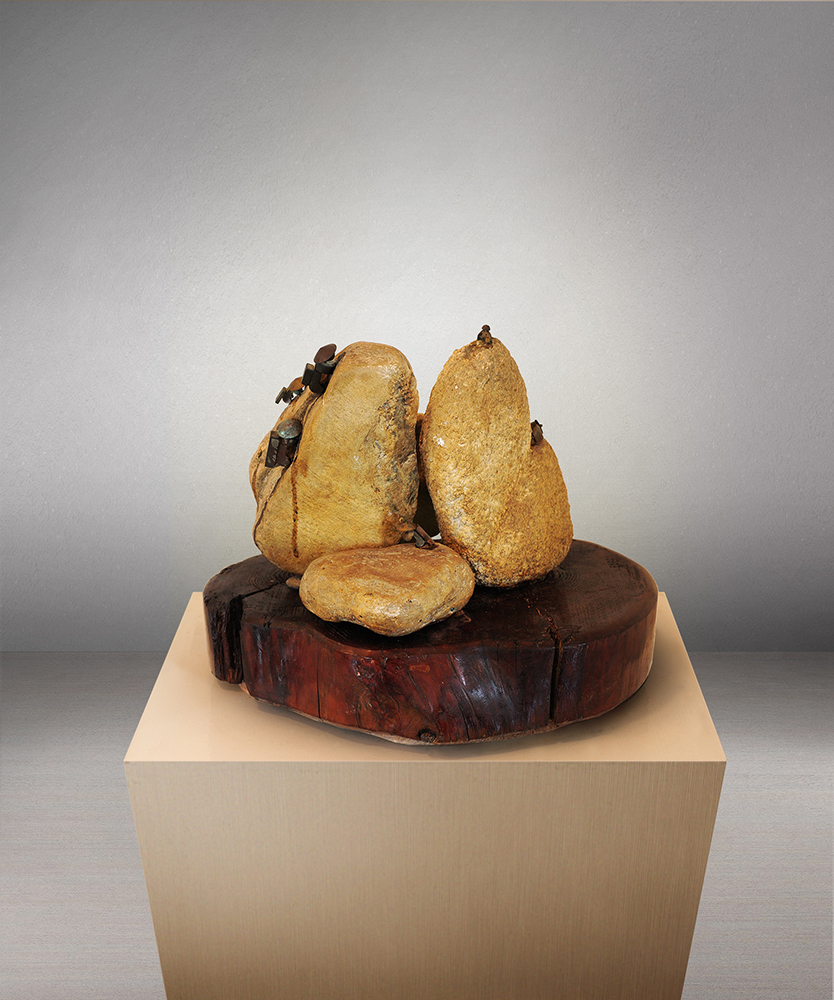The unique feature of Diem Phung Thi’s sculpture is based on the arrangement and variation of 7 modules. They are called alphabets by the art critic Ray Mond Cogniat or 7 musical notes by Professor Tran Van Khe. The alphabets were drastically reduced into 6 elements. Two parallelepipeds stands upright, one small, one big. The parallelepipeds of Diem Phung Thi are the simplest and oldest ones, the relationships between the three edges which is significant transfomation of 1/3/6 and 1/4/8. But for Diem Phung Thi, the simplest shapes find a particular value and parallelepiped becomes a stele, a human figure, a rocket, a symbol or a copula. It is a simple connection between two elements
These two geometrical volumes are opposed by two volumes with irregular curves of a constant thickness, they oppose and complement each other. This one appears closed, the other open. This one rests on a volume or supports, the other is as a cover or absorb other object…
The most important element with the lowest volume is a long bar which end at each end with to similar and asymmetrical bulges. It looks like the symbol of canoe or a pair of horns; Whatever its position, we can also see it as the roof of an Asian construction.
The last part is an asymmetrical angular element, the longest side being swollen, the roundest hollowed out. If this element is isolated, it becomes meaningless, but under the skillful hands of Diem Phung Thi it takes unexpected values when coupled with a similar inverted element.
Diem Phung Thi has written: “I have created sculptural modules.These modules are only simple elements which are easily made and they do not bear the risk of being distorted. After having made the modules, I only structure them in the statue building space regardless of how that space is. Each statue built in that way is a new ensemble which has soul and life and its own dimension. The attraction of modular sculptural art lies at the flexibility in the arrangement and the simplicity in the construction”.







